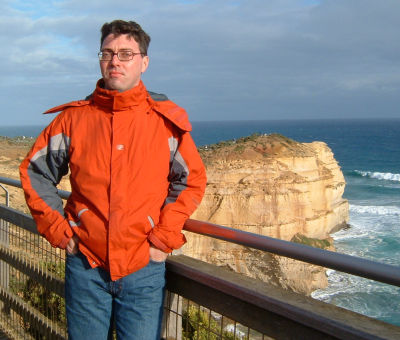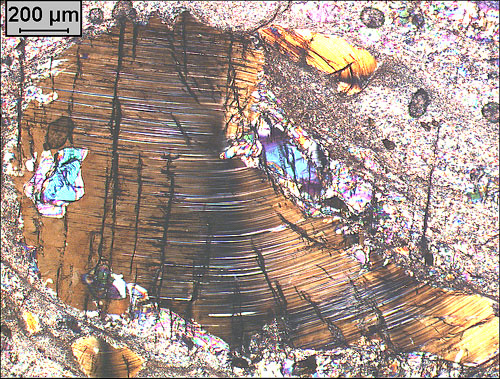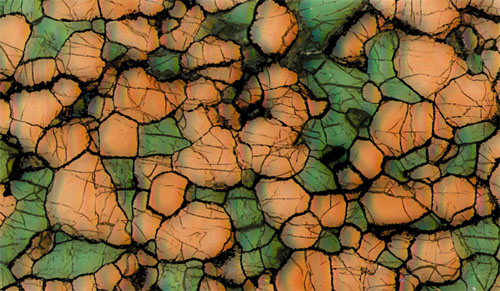
Matthias Barth
Institut für Geowissenschaften
Johannes Gutenberg-Universität Mainz
Becherweg 21
55099 Mainz
Germany
e-mail: barthm at uni-mainz.de
phone: +49 6131 39 24759
FAX: +49 6131 39 23070


|
Matthias Barth e-mail: barthm at uni-mainz.de
|
This project aims to geochemically characterize Tethyan-type ophiolites from the Balkans. Using the data produced during the first 18 months of this project, we are already able to offer some new explanations for the major conundrums surrounding the origin of Balkan ophiolites, and to open some new problems. We offer the first reliable age constraints using in situ U-Pb zircon ages as well as Ar-Ar dating of different minerals, for the timing of the oceanic crust production in Dinarides and Vardar ophiolites, and geochemical character of the melts produced. In the continuation of this project, a database for Hf isotopes on leached samples of basaltic rocks from Balkan ophiolites will be completed and new measurements for Hf isotopes as well as trace-element characterization of zircons from Dinaric gabbro- pegmatites will be performed. The data will be used to make a comprehensive model for the origin of Balkan ophiolites.
Researchers: Milica Bozovic, Dejan Prelevic, Matthias Barth, Rolf L. Romer (GFZ Potsdam)
The platinum group elements (PGE = Pt, Ir, Os, Ru, Rh, Pd) are unique petrogenetic tracers in mantle rocks because, as siderophile and compatible to moderately incompatible elements, the PGE have the possibility of providing very different information about igneous processes than can be derived from lithophile trace elements such as the rare earth elements (REE). In addition, the Re-Os decay system can provide chronological constraints on the fractionation processes that affect these elements. Interpretation of the PGE and Re elemental and Re-Os isotopic data, however, are complicated by an incomplete understanding of the geochemical behavior of these elements. The Othris Ophiolite is an ideal location to study the behavior of Os isotopes and PGEs during refertilization because Othris allows a detailed investigation of peridotites with more refractory compositions and of samples that have clearly interacted with infiltrating basaltic melts.
Researchers: Matthias Barth, Gerhard Brügmann (MPI Chemie)
In this geochemical and petrographic study a suite of basalts from the Othris Ophiolite are analyzed. The geochemical data is used to constrain the tectonic setting(s) during the formation of the Othris Ophiolite in the Jurassic.
Researchers: Tatjana Gluhak, Matthias Barth
Investigation of the extent to which harzburgites and dunites in ophiolite massifs have been formed by melt infiltration and an assessment of the degree to which the rocks have reached chemical equilibrium. The results of high spatial resolution trace element and isotopic analysis (TIMS microdrilling) are to be combined with constraints from recently published diffusion kinetics studies to resolve whether melt and residue retain full chemical equilibrium during melt extraction. Research is funded by the Geodynamics Institue of Utrecht University.
 |
deformed orthopyroxene |
Researchers: Matthias Barth, Gareth Davies (VU Amsterdam), Martin Drury, Paul Mason
This work addressed the origin of a suite of xenolithic eclogites from Sierra Leone and investigated their relationship to Archean crustal growth and geochemical mass balance in the Silicate Earth. Our findings show that some of these eclogites appear to be derived from subducted oceanic crust (based on oxygen isotopic compositions outside the "mantle" range) and may be residues of Archean granitoid generation. Moreover, we find that the chemical composition of the eclogites may solve the mass imbalance for Nb and Ta in the Silicate Earth. Research was funded by the National Science Foundation. more about eclogites
 |
eclogite xenolith KEC 81-5 |
Researchers: Matthias Barth, Roberta Rudnick (UMD College Park), Bill McDonough (UMD), Ingo Horn (ETH Zürich), John Valley (U Wisconsin), Mike Spicuzza (UW), Rick Carlson (DTM), Steve Haggerty (U Mass. Amherst)
Study of fundamental questions related to Li isotope geochemistry in the Earth: What is the present-day range
in Li isotopic composition of the upper mantle? Do Li isotopes fractionate under the high pressure-low temperature
conditions present in modern subduction zones? How sensitive are Li isotopes to small volumes of fluid infiltration
in these settings? Can Li isotopes be used to trace recycling of altered oceanic crust through the mantle?
Researchers: Roberta Rudnick (UMD College Park), Bill McDonough (UMD), Paul Tomascak (UMD),
Thomas Zack (UMD), Matthias Barth, Claude Dalpé (UMD)
Results of amphibole partitioning studies and eclogite research can be applied to the investigation of processes
in the first half of the Earth's history. The experimentally determined behaviour of trace elements during melting
in subduction zones is currently being used to assess models for the development of the early continental crust.
On the modern Earth, all oceanic crust is subducted into the mantle after only 160 million years at the latest,
so that no remnants from the early Earth remain. The eclogite xenoliths thus provide the only samples known to
represent the ancient oceanic crust and so can be used to investigate processes at this time. Some eclogites indicate
conditions in the early Earth, 2500 million years ago, that were not so much hotter than modern mid-ocean ridges
as many scientists had thought.
Researchers: Matthias Barth, Steve Foley (U Greifswald), Dorrit Jacob (UG), M. Tiepolo (Pavia), R. Vannucci
(Pavia)
Researchers: Kike Beintema, Stan White, Matthias Barth, Paul Mason
![]()
back | home | auf deutsch
Copyright © 1996-2008 by Matthias Barth. All rights reserved.